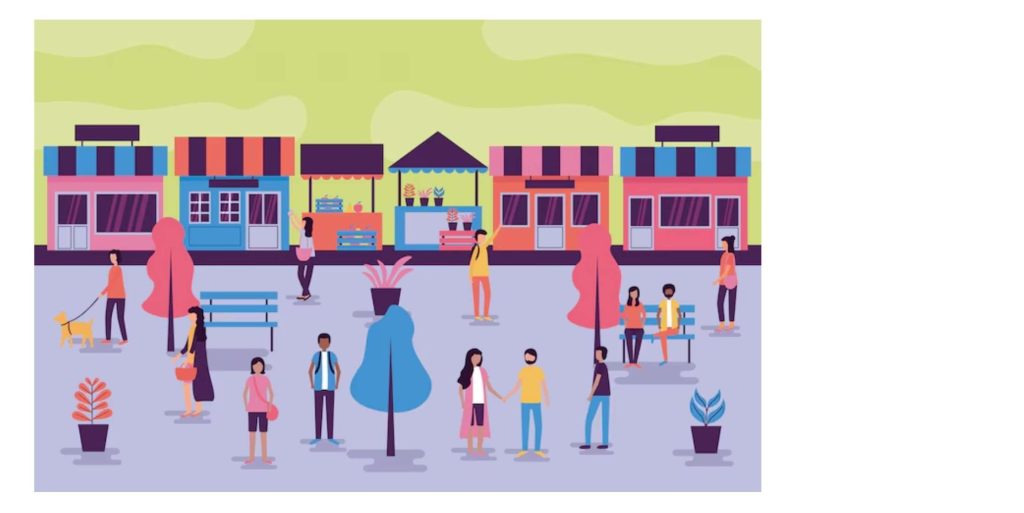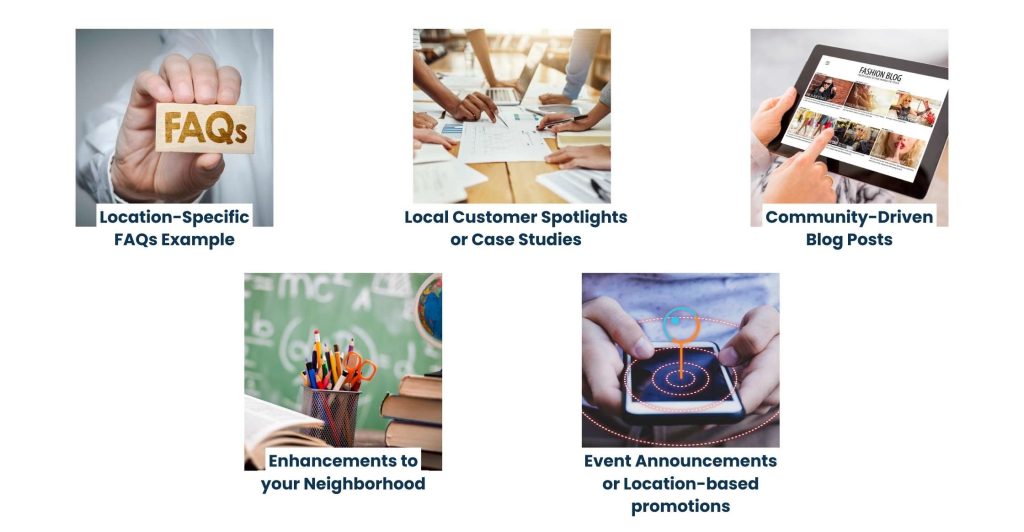Introduction
Local SEO Los Angeles is not easy to manage for several business locations in a huge city like Los Angeles. Every neighborhood is essentially its market; there are different customers, search behaviors, and competition. If local users can’t find your storefronts or service areas in local searches, you are missing out on new customers every day. And that’s where Local SEO Los Angeles shines. Being on Google Maps is not enough; it’s about ensuring every location is discovered by the right people, at the right time, and in the right context.
Los Angeles isn’t a one-size-fits-all place. What plays in West Hollywood may flop in Glendale. People are looking with a kind of hyper-local intention —“ near me,” “open now,” or “best [ service ] in [ neighborhood ]”—and they expect results that read relevant and nearby. Since you cannot stand out without a great, optimized online presence for each location, customers (or potential customers) will likely turn to other businesses that do.
This blog is for business owners, marketers, and operators who want to ensure that their multi-location brand appears strong in the most difficult markets in the country. And here we’ll tell you what is most important when it comes to Local SEO in Los Angeles, and how to set up your locations to win in local search, without the clutter!
Local SEO Los Angeles Is a Game Changer

Los Angeles isn’t just one city; it’s a constellation of mini-cities, each with its own personality, consumer base, and competitive terrain. Venice to Glendale, Koreatown to Marina del Rey, what works for one neighborhood can be a nonstarter in another. That’s what makes Local SEO in Los Angeles so unique, and so difficult.
Though tempting to utilize a one-size-fits-all strategy with all your locations, this is one of the fastest ways for a multi-location business to fail. In LA, people think and search hyper-locally. They don’t just want “a dentist” — they want a top-rated dentist in Silver Lake who’s open late, or a dog groomer in Westwood with weekend hours. And Google’s algorithm is designed to accommodate that behavior.
Also Read: Crypto Support Solutions
LA Consumers Look for Intent and Fast

If you’re searching “coffee shop near me” in LA, you’re most likely just minutes away from a purchasing decision. These aren’t casual browsers. They’re sitting on their phones, nearby and ready to act. That moment — it’s called a high-intent local search — is the type of search local SEO is designed to capitalize on.
The more locations you have, the more of these searches you can be found in — but only if your SEO supports it. That is to say, just because your Culver City outpost won’t compete with your Downtown LA location the same way. Every branch must prove to Google that it’s a unique business, serving a particular local market part.
One City, Many Markets

Unlike smaller cities, where a single listing may be sufficient to hit everyone in the area, LA’s size and sprawl require a segmented strategy. I live in North Hollywood, I won’t drive 35 minutes to El Segundo for a haircut, great salon or not. And Google won’t show them that salon anyhow — it prioritizes local relevance.
So if you approach LA as one large market, you will miss out on dozens of smaller, much higher converting ones.
The complexity is multiplied by the Multi-Location nature

It’s pretty doable to manage one spot. You create a Google Business Profile, develop a landing page, and obtain reviews. But with multiple branches, the effort isn’t just multiplied — it is layered.
- Each space needs its profile, including hours, address, photos, and category tags.
- You collect and manage location-specific reviews.
- Location Pages need optimized, unique content and a keyword focus for that area.
- It requires dozens of platforms where directory listings need to be consistent and updated.
One single detail (such as an incorrect phone number or out-of-date hours) slipping through the cracks can damage more than just rankings; it can damage trust. And when you’re talking about five, 10, or more locations, that risk gets bigger fast.
The bottom line: Local SEO in Los Angeles is not going to cut it if you’re simply doing “SEO with a map.” It’s a customized, place-targeted approach to marketing that gets at how LA consumers think, move, and search. If you want to be able to compete here, you have to treat each spot as its own brand, with its own digital presence.
Local SEO Los Angeles - The Basics Of What It Covers

Before you can dominate Local SEO in Los Angeles, you must ensure you know what it is. And no, this isn’t just about getting on Google Maps. Too many business owners think that as long as their business appears in the search results when they type their name, they’ve “done SEO.” But true Local SEO is a little more complicated. The reason is, particularly when you’re dealing with multiple locations, you are not just optimizing for visibility—you’re optimizing for credibility, for clicks, for conversions in every neighborhood you serve.
Here’s what Local SEO is – broken down into key areas of interest when it comes to multi-location brands:
1. Optimization of Google Business Profile (GBP)

A separate Google Business Profile is needed for each location. That includes a verified address, accurate hours, a telephone number, and business category. But that’s just the start. In addition to all that, a well-optimized profile will have:
- High-quality or location-specific photos.
- Business description drenched with keywords.
- Current services and service areas.
- The other day: Here’s what is happening in the blog.
- Reply to reviews, especially the bad ones.
Think of GBP as your online front store locally. It’s what people first see, before they land on your website. If it’s incomplete, unprofessional, or simply outdated, customers will keep scrolling at wind speed.
2. Landing Pages for Locations

Local traffic should not be directed to your homepage, since digital marketing puts you on the global map. Each location should have its own page, optimized for that specific neighborhood that the location serves. What makes a good location page?
- And a unique URL (e.g., /los-angeles-westwood).
- Original content (not posted on another page).
- Customer references in your region.
- Map and parking tips.
- Google map integrated with a pin.
- Calls to action specific to that location.
These pages help Google (and your customers) bridge the gap between a search like “mechanic in West LA” and the West LA branch of your company, rather than your whole company.
3. Local Citations / Directory Listings

Citations are online references to your business name, address, and phone number (NAP) in directories – e.g., Yelp, Apple Maps, Bing, Yellow Pages, etc. The key is consistency. Even the slightest of differences can confuse Google’s indexing (e.g., “St.” vs. “Street”).
When you have multi-location businesses, maintaining all of your listings up-to-date across the web is a struggle, but nowadays, it’s necessary. You may adopt citation management software or hire a virtual assistant (such as Tasks Expert) to ensure these profiles are kept updated and monitored frequently.
4. Reviews & Ratings

“Your local SEO is going to be so review-driven. Google takes volume, frequency, and sentiment into account. But there’s the rub: reviews have to be connected to the correct place. A single branch with dozens of 5-star reviews can outrank a location with no feedback, even if that location is part of the same business.
Get satisfied customers to write a review … in the right place. Put together a system — email follow-ups, texted links, QR codes- that makes it simple for them.
5. Mobile & Voice Search Filter

Most local searches occur on mobile, and many are voice searches (think searches like, “Hey Siri, where’s the nearest urgent care?”). Your site and listings should work on mobile, load quickly, and be organized to reflect natural speech.
You can opt to incorporate more conversational keywords into the mix (like “near me”) and ensure elements of the site, like your business hours, location pages, and service details, are easily scannable on a phone screen.
Takeaway: Local SEO isn’t a single feature; it’s an entire ecosystem. And when you operate multiple sites in a competitive city like Los Angeles, it’s not a choice. And if any one part of that ecosystem is broken — old listings, no reviews, duplicate pages — your visibility to customers and credibility with search engines is compromised. But when will it all align? You’re the neighborhood favorite in every neighborhood you serve.
Also Read: Blockchain Data Entry
Setting Up Local SEO Los Angeles Location

If you oversee several business locations in a city as sprawling and diverse as Los Angeles, you have to have local SEO set up for each location. It’s not good enough to have a single point of list or a page that informs. Google sees each address as a separate listing, and so should you. Here’s how to set things up properly, one place at a time.
1. Create a Google Business Profile for All Locations

Begin by asserting or building individual GBP listings for each physical address. Enter the official business name, valid address, company phone number, and the right primary business category for each location. Incorporate defined service areas or neighborhoods to specify who you serve. Include the photos that help potential buyers feel that they are, in fact, there with your real, place-specific images (not stock) to increase visibility and create trust. Check to see if the operations hours for each branch are correct individually — don’t just copy and paste from your main location. EVERYTHING MATTERS, because Google reviews consistency before ranking your profile.
2. Create Specific Location Pages for Landing Pages

Each branch should have a complete page on your site — end of story. This allows Google to pair searchers with the location that’s close by and contextually nearby. Avoid reusing content. Instead, try adding some content that speaks to the area, such as local landmarks, specialty services at that location, or employee bios. Optimize your on-site SEO: clear use of H1s, title tags that read “Best [Service] in [Neighborhood], Los Angeles,” URLs that look like /los-angeles-west-hollywood. Embedding customer reviews, Google Maps, and parking information can also attract more foot traffic and user trust.
3. Build Local Citations

Once your GBP and web pages are good to go, the next thing to do is add each location to high-quality online directories. Begin with Yelp, Bing Places, Yellow Pages, Apple Maps, and industry-specific sites. You’ll want to use the same business name, address, and phone number that you do on your Google profile, down to every comma. Incoherent references make search engines not understand and reduce your visibility. Services like BrightLocal or Whitespark can aid in managing these listings. But if you’d like to go fully hands-free, hire a trained virtual assistant to keep on top of it with the assurance that they stay up to date. And remember, citation work is not a one-time thing, but an ongoing process that will need regular attention and cleanup.
4. Get Location-Based Reviews

People also tend to trust a business with a lot of recent, positive reviews that are associated directly with their neighborhood. Teach your staff to request reviews as a part of your customer experience. You can also automate follow-up review requests via email or over SMS. If so, add the review link to that location directly, and avoid confusion. Don’t forget to reply to reviews — the positive ones and the negative ones. Google rewards businesses that participate in customer feedback, and it lets possible customers know that you care.
Converting Content - Even Locally

When most people think about search engine optimization (SEO), they think of having the right keywords, a well-placed title on pages, and the number of backlinks you have. But what truly gets the customer to trust you, click, and buy — especially at the local level — is content. And for a Local SEO Los Angeles multi-location business, content must be hyper-localized, place-based, and people-focused. It’s not just about ranking. It’s about relevance.
Nobody wants to become just another number. They want to know that you know about their side of the track, that you know what they are up against, that you are in their community. That’s where local content enters the picture.
1. Why Local Content Works

Search engines value recent and location-specific information. But humans, too, make a point of it. Because when your landing pages or blog posts mention events, landmarks, or customer stories that are pertinent to LA neighborhoods, people feel more connected — and more inclined to convert.
Think of it; a landing page that reads “Serving All of Los Angeles” is acceptable. But one that reads “Helping Westwood Residents Simplify Their Taxes Since 2015” sounds much more promising.
Local content says to people that you’re part of the community, you’re not just another company doing business in the background.
2. Types of Content That Convert

If you are looking to increase local visibility and engagement, consider Local SEO Los Angeles and produces content like this for each branch:
- Location-Specific FAQs Example: “Can I get a same-day appointment at your Burbank clinic?” These aid in voice search and long-tail keywords, and actually, they’re serving real customer needs.
- Local Customer Spotlights or Case Studies: Highlight local stories from customers in each region. “How Maria from Echo Park Used Our Cleaning Services to Prep Her Airbnb. It’s relatable, personal, and helps create social proof.
- Community-Driven Blog Posts: Post about things going on in each neighborhood: “5 Things to Do Near Our Studio City Location This Weekend.” This is shareable, searchable content and links your brand to the community.
- Enhancements to your Neighborhood: Landing Pages Go above and beyond. Include testimonials from actual customers, mention your history in that community, and showcase partnerships with local schools or businesses.
- Event Announcements or Location-based promotions: “Come by Our Highland Park Store for a Free Tasting on Saturday!” Simple. Relevant. Click-worthy.
3. Where to Publish It

Content doesn’t need to reside solely on your blog. Use your:
- Google Business Profile posts
- Instagram and Facebook with geotags
- Email newsletters by location
- Pages for each neighborhood on your site
Put your content where your customers already are — and do it in a location-aware fashion wherever you can.
4. Include calls-to-action (CTAs) on everything
If a person has just finished reading your blog post about tips on Sherman Oaks parking near your shop, what would you like them to do next?

Summarize every piece of content in a clear, actionable CTA:
- “Schedule an appointment in our Sherman Oaks office.”
- “Call our Santa Monica staff now for a free quote.”
- “Had great experiences in Beverly Hills?” Write a review.”
CTAs convert attention into action — and that’s kind of the point of local content.
Content isn’t only for branding or blogging — it’s a conversion tool. When it’s built for a location, what you get is a twofer: it makes you more visible, and it makes you feel real, local, and trustworthy to that next customer.
Local Link Building - But Smarter

Forget spammy backlinks. Think local partnerships:
- Sponsoring a local event or sports team.
- Guest blog on local blogs/media outlets.
- Work with non-competing businesses nearby.
- Provide local student discounts and collaborate with universities to promote them.
3-5 relevant local or GMB listings will enhance your rankings.
Following What Counts By Location

Use tools like:
- Analytic Google with UTM tags by location page.
- Call tracking number for each location.
- GBP Insights to track engagement (calls, emails, etc.).
It’s not enough to monitor your traffic — monitor the results. Which of these branches is performing best? Where are you dropping off? Data is telling you what to double down on.
- Duplicating content and/or copying and pasting content from one location to another.
- Neglecting mobile UX (most local searches are on mobile.
- Failing to address negative feedback.
- Unify all listings to the homepage.
- Inconsistent NAP details on different platforms.
These may be tiny mistakes, but they multiply. Google is looking for clear answers — and so are your customers.
Conclusion
In a vast city like Los Angeles, local visibility isn’t just beneficial — it is essential. If not every neighborhood you serve has a location ranking for your multi-location business, you’ve got a leak in your tank of opportunity.
The good news? You don’t necessarily have to reinvent the wheel for every place. Build A Scalable Local SEO Los Angeles System That Works City-Wide. With the right structure, strategy, and consistency, you can create a scalable Local SEO process.
And if you need some help getting it going? That’s precisely the sort of work virtual teams like Tasks Expert can process: clean listings, review tracking, citation work, etc. So you can concentrate on running your business as your branches stay.
About Us
Tasks Expert offers top-tier virtual assistant services from highly skilled professionals based in India. Our VAs handle a wide range of tasks, from part time personal assistant to specialized services like remote it support services, professional bookkeeping service etc. Furthermore, it helps businesses worldwide streamline operations and boost productivity.
Ready to elevate your business? Book a Call and let Tasks Expert take care of the rest.









